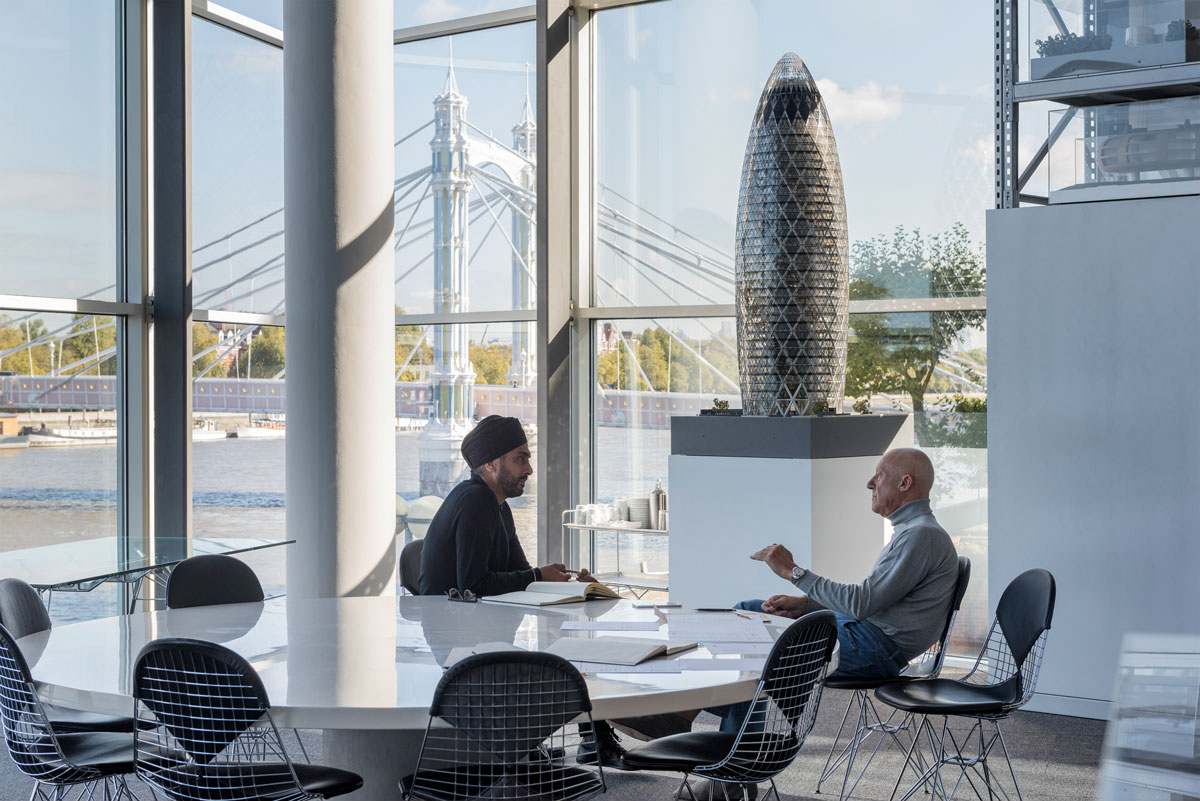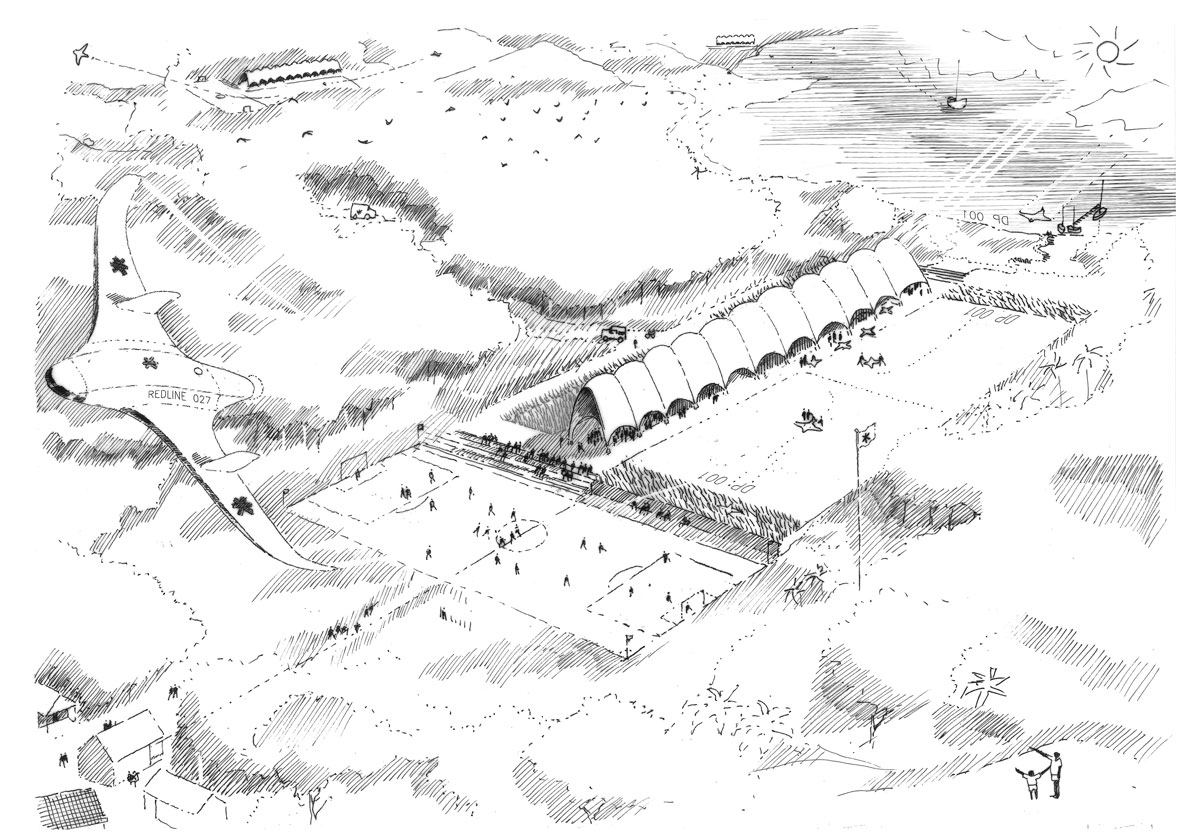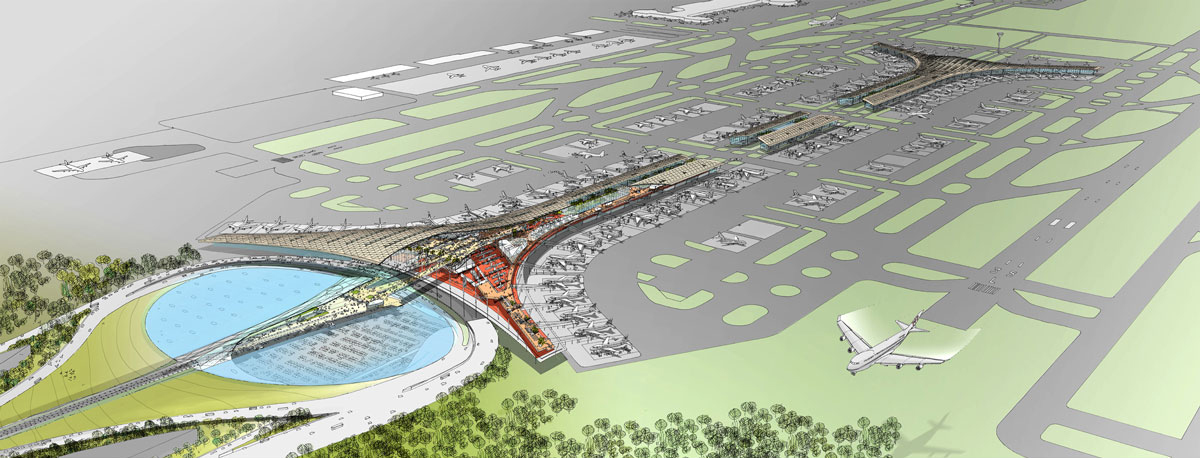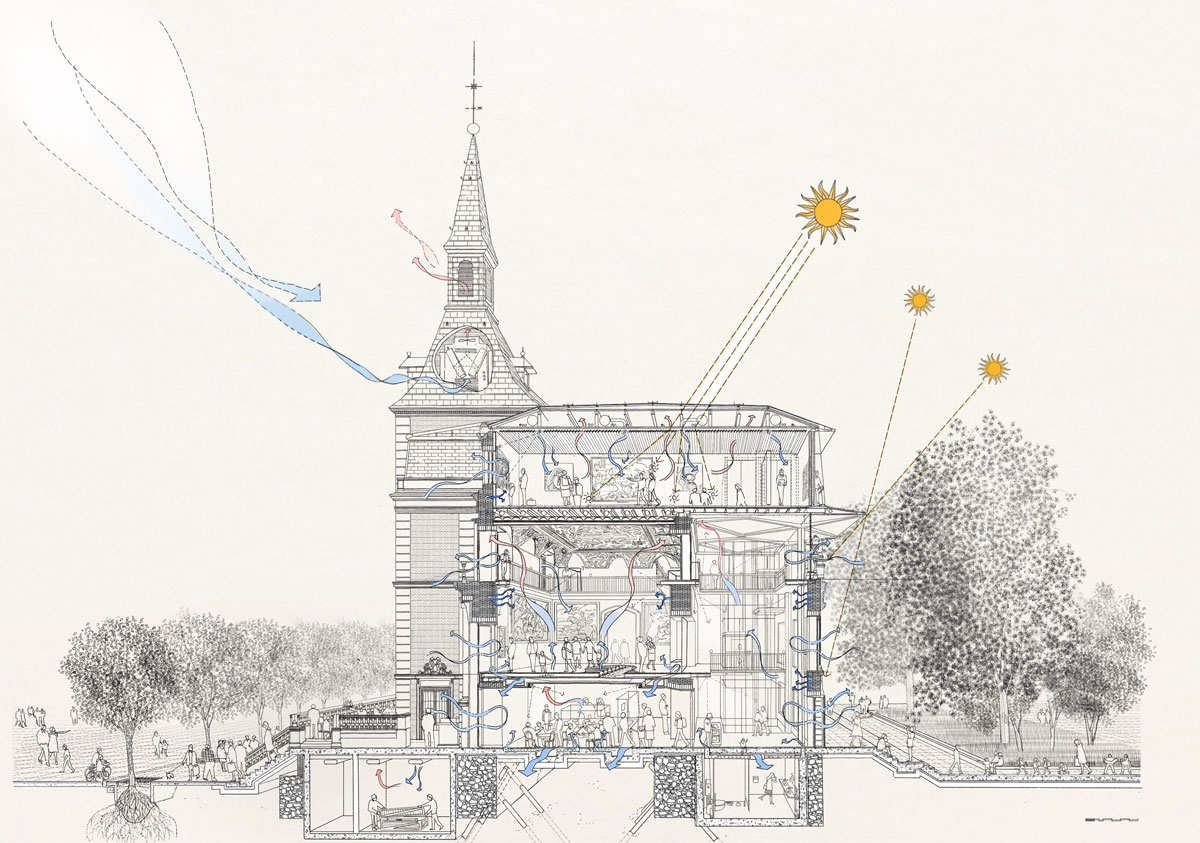Designer and alumnus Narinder Sagoo talks about his experiences at The Bartlett and his rise to Senior Partner at Foster + Partners.

Narinder Sagoo and Norman Foster, Foster Partners' London office. Credit: Nigel Young / Foster Partners
When Narinder Sagoo was seven years old, he was told to stop drawing as he’d never make any money out of it.
Now a Senior Partner at Foster + Partners, his desk is covered with pastels and pots of ink. In fact, as Head of Foster + Partners’ 20-strong Design Communications team, Sagoo is responsible for the visual representation of all the practice’s projects, from sketches through to photorealistic representation. The Bartlett helped set him up for this role, he says, giving him “a huge sense of resilience and discipline”.
After graduating with a first-class honours degree in architecture from Leeds Metropolitan University, followed by a year’s placement at Foster + Partners, he joined The Bartlett School of Architecture’s Unit 21, run by CJ Lim and Christine Hawley.

Droneport. Credit: Narinder Sagoo / Foster Partners
“It was the toughest two years of training as an architect and I would happily do it again.” He describes Lim as an artist who was “conceptual in thinking and pushed my brain”. Meanwhile, Hawley, he explains, “taught us how to design real buildings that could really work”.
Sagoo returned to Foster + Partners after graduating from The Bartlett in 1999 and, at 24, became the youngest ever associate. “I had this thing in my head that I wanted to work with Norman and not just for him, and through a shared passion of drawing I’ve worked with him closely.”

Beijing Airport. Credit: Narinder Sagoo / Foster Partners
Drawing in the digital age
On his drawing technique, Sagoo feels he was lucky to have studied just before the CAD age, so “we were all drawing by hand”. Now, he draws with an Apple Pencil and iPad, because it gives him the freedom to draw on the bus, present animated drawings to a client and share his work digitally. “Digital gives us flexibility.”
Sagoo’s team has a relationship with iPad software developers, meaning that they get to test software before it’s available to the public. “They’ll code software to meet our needs, so we’re always ahead of the game,” he says. “But I haven’t lost touch with paper and pencil and paint.”

Prado Museum Extension. Credit: Foster Partners
Sagoo, who is Sikh and wears a turban, is one of the champions for ethnicity in the workplace at Foster + Partners. “It creates a workforce that reflects our clients and the ethics and values that we want to be represented with,” he explains. “My belief is that we shouldn’t try to fit in when we’re born to stand out.”
 Close
Close


